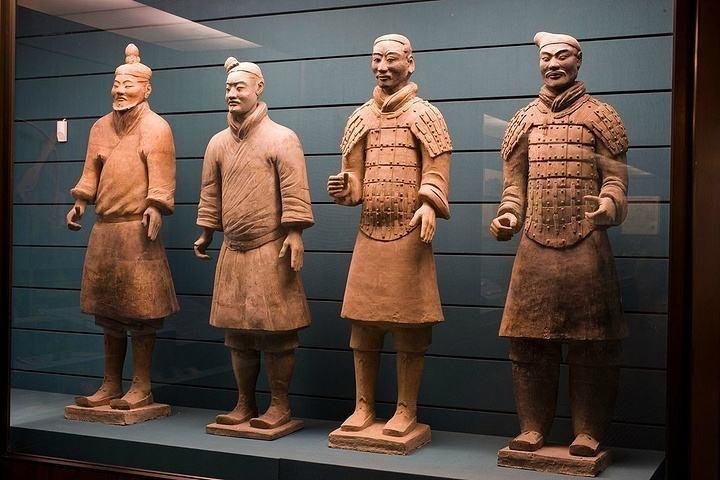
The Silent Guardians: Exploring the Cultural Significance of the Terracotta Army
A Testament to Power and Authority
The Terracotta Army, unearthed in 1974 near Xi'an, China, is more than just a collection of clay soldiers and horses. It stands as a monumental testament to the power and authority wielded by the Qin Dynasty, specifically its first emperor, Qin Shi Huang. These figures, each uniquely crafted with remarkable detail, were never intended for public display. They were meant to serve as guardians in the afterlife for the emperor, reflecting the immense importance placed on the transition to the next world. The sheer scale of the army, estimated to contain over 8,000 soldiers, 130 chariots, and 520 horses, underscores the emperor's ambition and the vast resources at his command.
A Window into Ancient Military Practices
Beyond their symbolic significance, the Terracotta Warriors offer an invaluable window into the military practices of ancient China. The figures depict a meticulously organized army, complete with different ranks and military roles. The variations in their armor, weapons (including bronze swords, crossbows, and spears), and even facial features provide historians with a wealth of information about the military strategies and hierarchical structure of the Qin army. This intricate representation allows us to understand how this powerful army, unified under a single emperor, was able to conquer the warring states and unify China for the first time in history.
A Reflection of Imperial Legacy and Artistic Prowess
The Terracotta Army also stands as a testament to the legacy of Qin Shi Huang, the emperor who sought to achieve immortality. His mausoleum complex, of which the Terracotta Army is just one part, was an unprecedented undertaking in Chinese history. The project involved hundreds of thousands of laborers and artisans, demonstrating the emperor's immense power and influence. Furthermore, the meticulous craftsmanship of the figures, each with unique facial features and painstakingly detailed attire, speaks volumes about the artistic skill and innovation present during the Qin Dynasty. The use of standardized molds, assembly-line production, and vibrant pigments reveals a sophisticated understanding of both artistry and large-scale production techniques.
Q&A
1. What makes the Terracotta Army so significant in the study of ancient China?
The Terracotta Army provides invaluable insights into the military organization, weaponry, and artistic techniques of the Qin Dynasty. It also serves as a tangible representation of the power and ambition of Qin Shi Huang and his vision of the afterlife.
2. How did the discovery of the Terracotta Army impact our understanding of history?
The Terracotta Army's discovery significantly enhanced our knowledge of the Qin Dynasty, its military might, and its cultural achievements. It offered tangible evidence of historical accounts and provided a deeper understanding of the period's artistry and technological capabilities.
3. Why are the Terracotta Warriors considered an important part of China's cultural heritage?
The Terracotta Army is an iconic symbol of China's rich history and artistic legacy. They are a UNESCO World Heritage Site and a source of national pride, representing the country's ancient civilization and its contributions to art, culture, and military history.